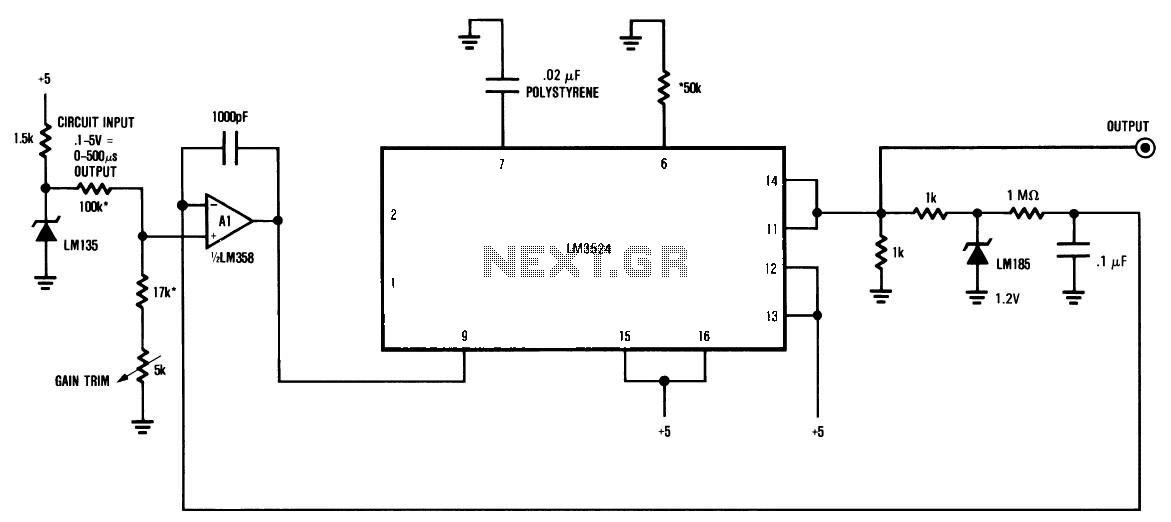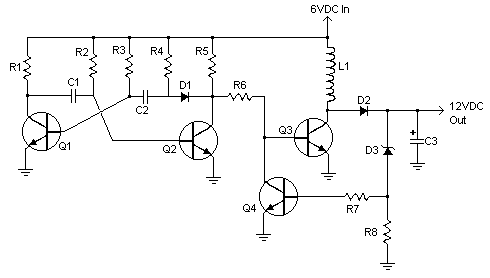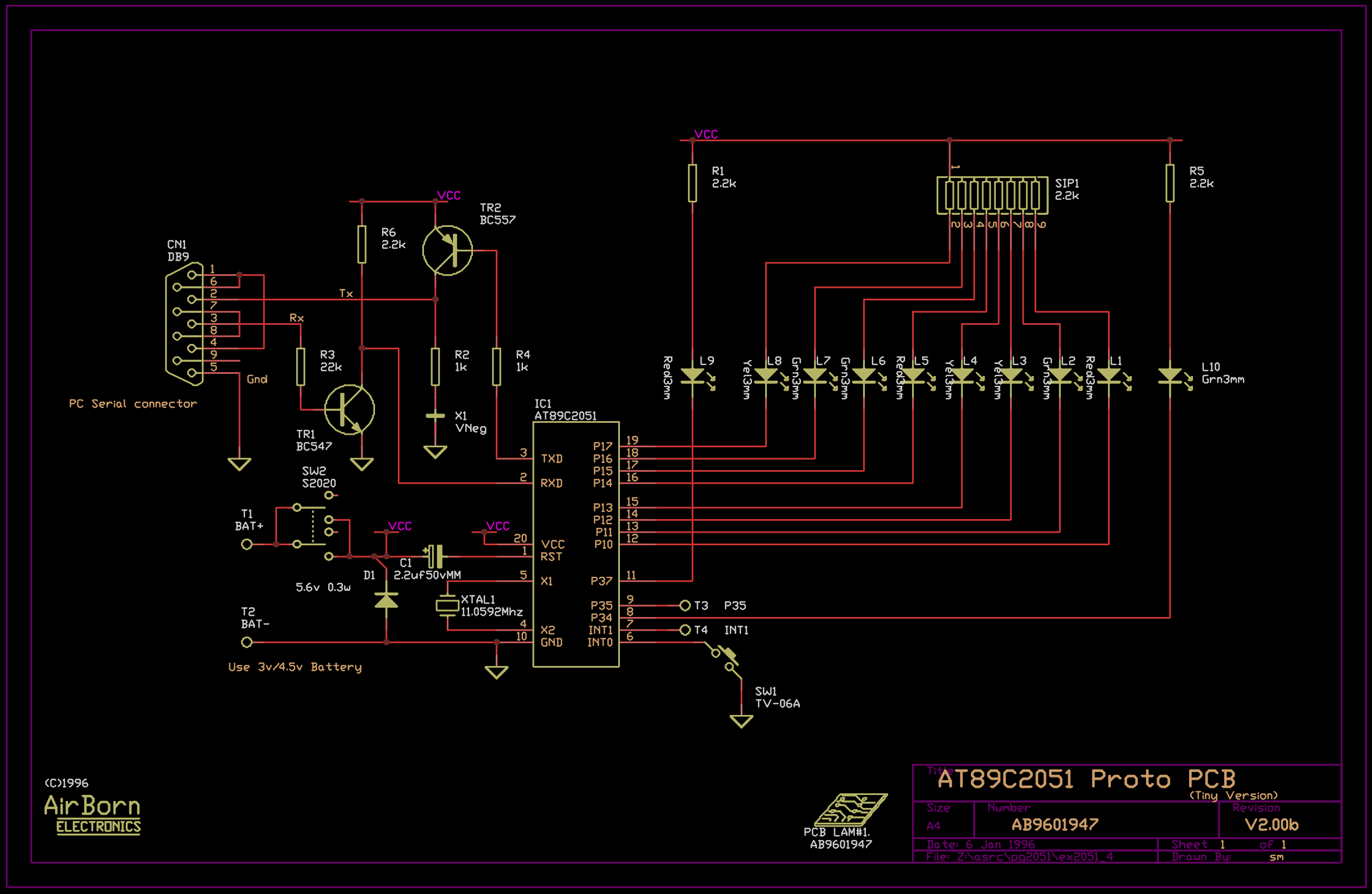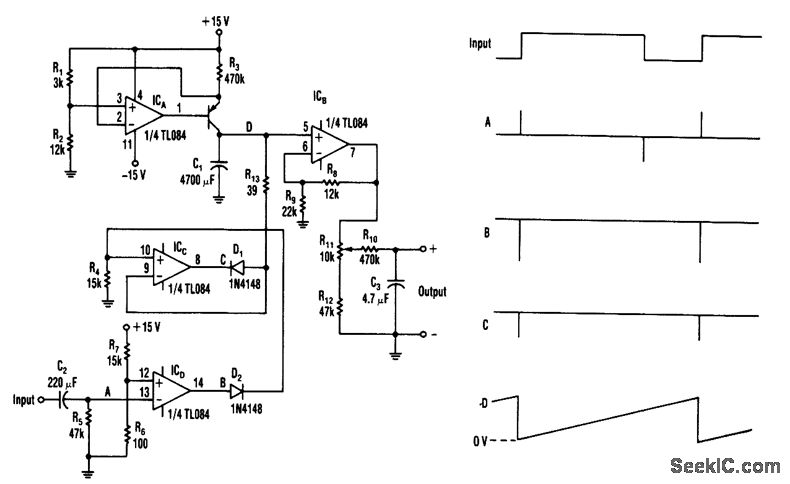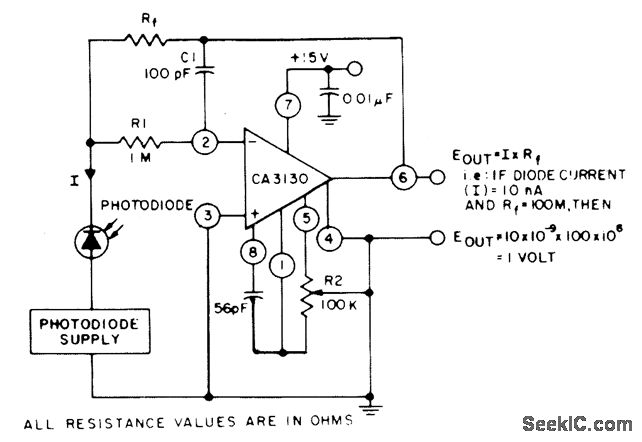
XR4151 XR4151 -Voltage-to-Frequency Converter
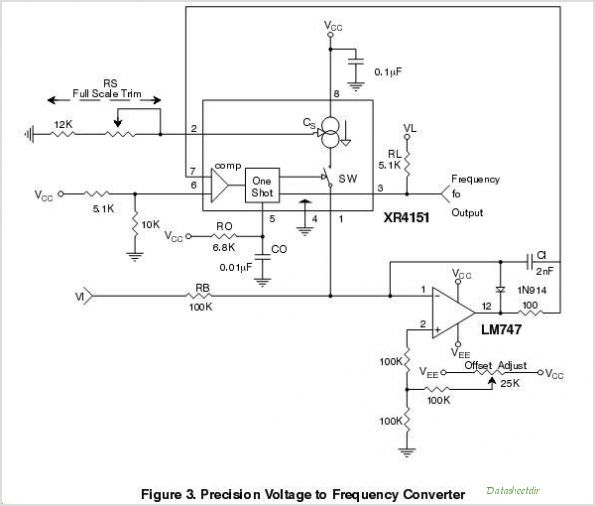
The purpose of this application note is to present an example circuit illustrating the operation of the XR-T5683 device at a data rate of 10.1 Mbps. This note includes the results of measurements taken on the XR-T5683 at this specific data rate. The evaluation was conducted using a modified board originally designed for 8.448 Mbps E2 service. The only modification made to the circuit, as depicted in Figure 1, was the reduction of the tuning capacitor value in the LC clock extraction circuit.
The XR-T5683 device is a high-performance integrated circuit designed for digital communication applications. Operating at 10.1 Mbps, this device is capable of handling various data transmission tasks efficiently. The circuit in question utilizes a modified board that was initially intended for a lower data rate of 8.448 Mbps. This modification demonstrates the flexibility of the XR-T5683 in adapting to different operational parameters.
The key adjustment made to the circuit involved the tuning capacitor within the LC clock extraction circuit. The tuning capacitor plays a critical role in ensuring the stability and accuracy of the clock signal, which is essential for synchronizing data transmission. By lowering the capacitor value, the circuit was optimized for the higher data rate, allowing for improved performance and reliability.
Measurements taken during the evaluation provide valuable insights into the operational characteristics of the XR-T5683 at 10.1 Mbps. These measurements include parameters such as signal integrity, jitter performance, and power consumption, which are crucial for assessing the overall functionality of the device in a real-world application. The results confirm that the XR-T5683 can maintain robust performance even when operating at higher data rates, making it suitable for various high-speed communication systems.
Overall, the modifications and subsequent measurements highlight the adaptability of the XR-T5683 device and provide a clear example of how to effectively operate this integrated circuit in high-speed applications.The purpose of this application note is to present an example circuit, illustrating how to operate the XR-T5683 device at 10. 1 Mbps. This note shows the results of measurements made on the XR-T5683 at a 10. 1 Mbps data rate. Hardware used for this evaluation was a slightly modified board designed for 8. 448 Mbps E2 service. The only change to the ci rcuit, which is shown in Figure 1, involved lowering the LC Clock extraction circuit tuning capacitor value. 🔗 External reference
The XR-T5683 device is a high-performance integrated circuit designed for digital communication applications. Operating at 10.1 Mbps, this device is capable of handling various data transmission tasks efficiently. The circuit in question utilizes a modified board that was initially intended for a lower data rate of 8.448 Mbps. This modification demonstrates the flexibility of the XR-T5683 in adapting to different operational parameters.
The key adjustment made to the circuit involved the tuning capacitor within the LC clock extraction circuit. The tuning capacitor plays a critical role in ensuring the stability and accuracy of the clock signal, which is essential for synchronizing data transmission. By lowering the capacitor value, the circuit was optimized for the higher data rate, allowing for improved performance and reliability.
Measurements taken during the evaluation provide valuable insights into the operational characteristics of the XR-T5683 at 10.1 Mbps. These measurements include parameters such as signal integrity, jitter performance, and power consumption, which are crucial for assessing the overall functionality of the device in a real-world application. The results confirm that the XR-T5683 can maintain robust performance even when operating at higher data rates, making it suitable for various high-speed communication systems.
Overall, the modifications and subsequent measurements highlight the adaptability of the XR-T5683 device and provide a clear example of how to effectively operate this integrated circuit in high-speed applications.The purpose of this application note is to present an example circuit, illustrating how to operate the XR-T5683 device at 10. 1 Mbps. This note shows the results of measurements made on the XR-T5683 at a 10. 1 Mbps data rate. Hardware used for this evaluation was a slightly modified board designed for 8. 448 Mbps E2 service. The only change to the ci rcuit, which is shown in Figure 1, involved lowering the LC Clock extraction circuit tuning capacitor value. 🔗 External reference
